Weekly Recap
U.S. stocks pushed higher for a sixth straight week last week, with the S&P 500 and the Dow Jones reaching fresh all-time highs. A strong start to the earning season and solid US retail sales data supported the view the US economy is on track for a soft landing.
The ECB cut interest rates by 25 basis points, which is in line with expectations. It also showed signs of shifting its focus to growth, which could produce faster rate cuts going forward. This is in contrast to the Federal Reserve, which is expected to adopt a more gradual approach to cutting rates.
The USD rose for a third straight week against its major pairs, hitting a 2.5-month high, boosted by solid retail sales data and the return of the Trump trade.
Oil prices fell 7% across the week amid a deteriorating economic outlook for top oil importer China and as the risk premium on oil surrounding the conflict in the Middle East eased.
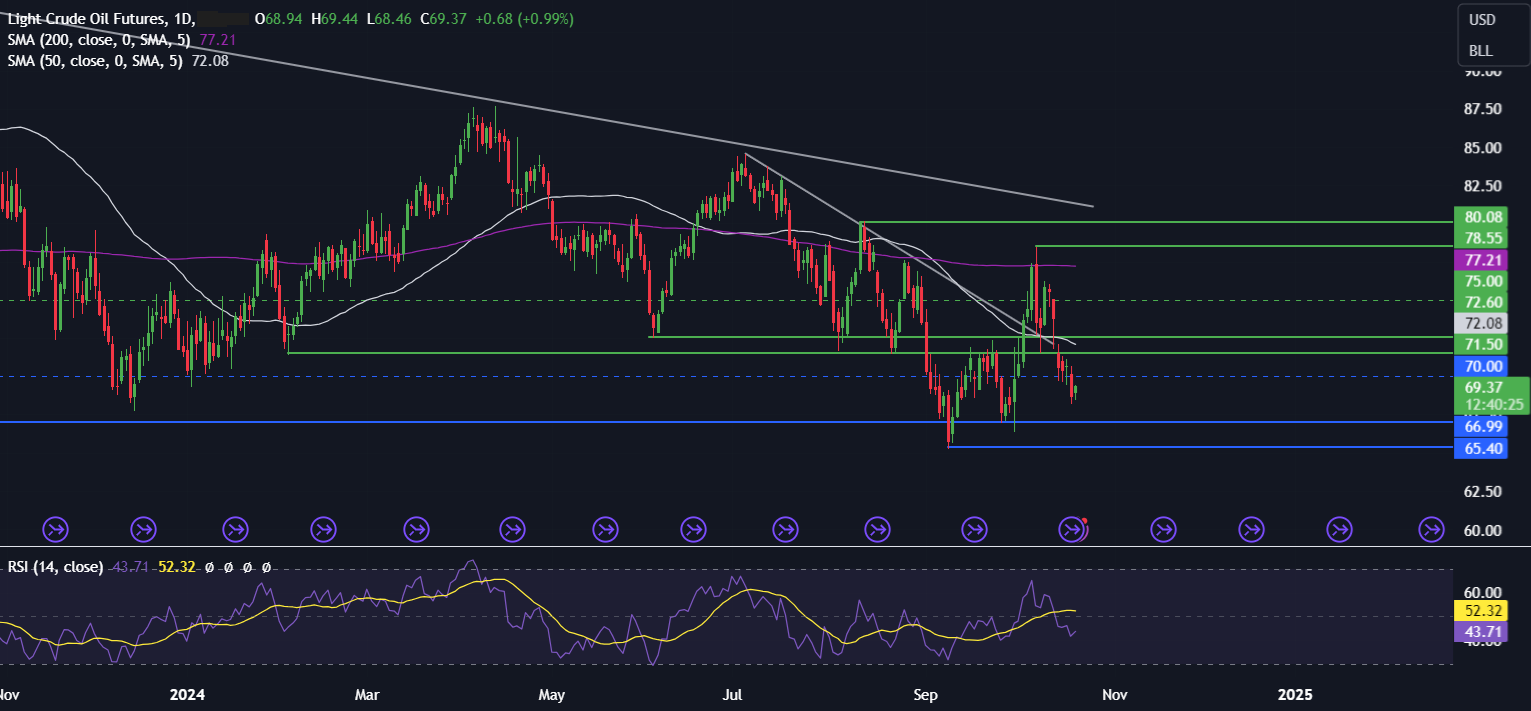
IMF Meeting (Monday – Friday)
Bank heads and finance ministers will meet in Washington from Monday for the annual meeting of the International Monetary Fund and World Bank to debate how countries can navigate high debt and low growth. Last week, the IMF warned that global public debt is set to exceed $100 trillion by the end of the year, driven by the US and China.
Russian President Vladimir Putin is set to host a summit of BRICS leaders on Tuesday. The participants will include countries such as Brazil, India, China, South Africa, Egypt, the UAE, and Saudi Arabia, which account for around one-third of the global economic output.
Meanwhile, gold prices rose to a fresh record high last week amid ongoing geopolitical uncertainty, and global central banks are expected to continue cutting interest rates. The precious metal will be in focus as the IMF discusses the outlook for the global economy and worrying debt levels.

BoC rate decision (Wednesday)
Bank of Canada is expected to cut rates by 50 basis points to 3.75% as price pressures ease in Canada. Headline inflation declined by more than expected to 1.6% YoY in September, while other data points have also pointed to signs of a slowing economy. The market and economists are convinced that the central bank will opt for a 50 basis point rate cut, adding to the 75 basis points worth of cuts that have already taken place since June. Governor Tiff Macklem said last month the central bank wants to keep inflation close to the mid-point of the 1%- 3% range, and economic growth could weaken. His comments fueled expectations that a larger rate cut may be necessary.
The more aggressive pace of cuts from the BoC is in contrast to the more gradual pace of cuts expected from the Federal Reserve, boosting USD/CAD to a 2.5-month high.
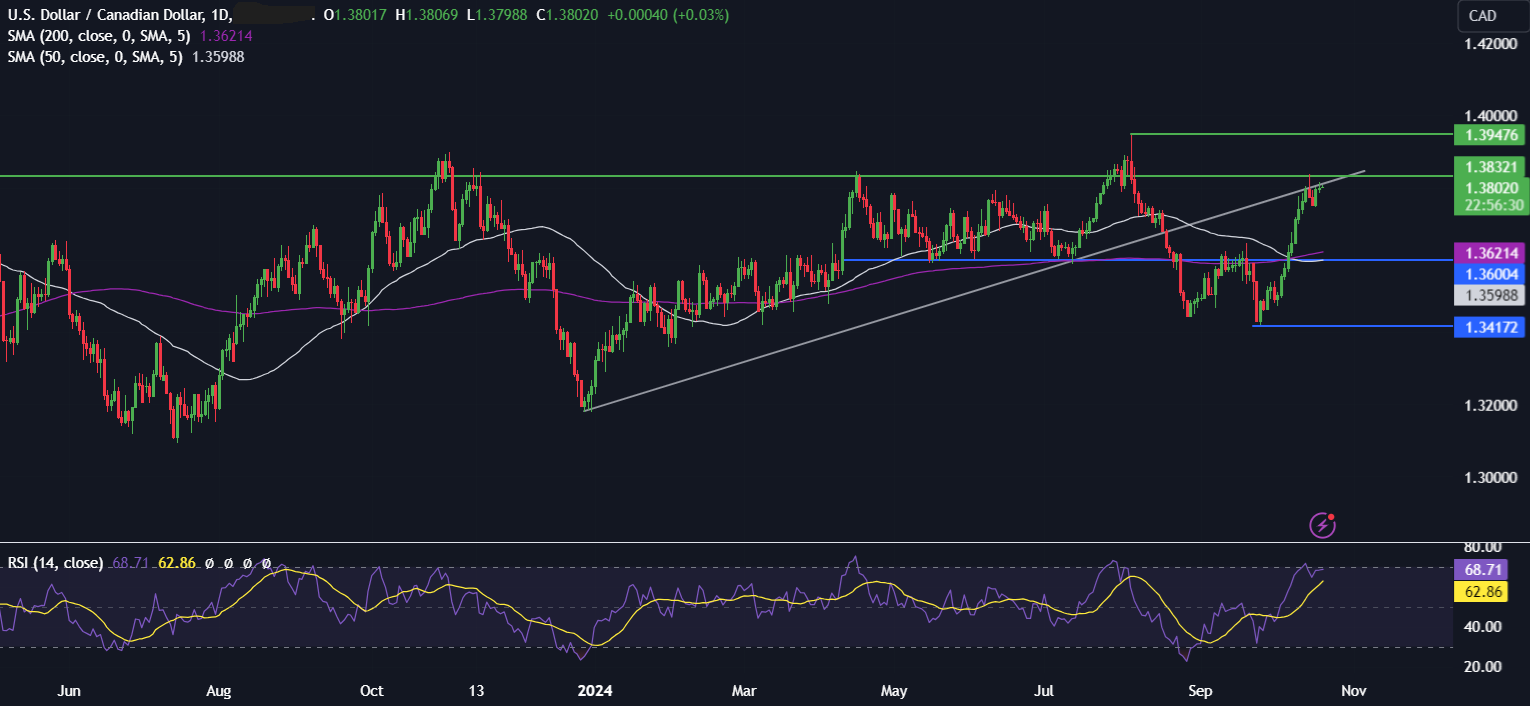
Eurozone PMIs (Thursday)
Expectations are for October’s manufacturing activity (PMI) to increase to 45.1 from 45 and the services PMI to pick up to 51.5 from 51.4. This means the composite PMI, which is considered a good guide for business activity, will come in at 49.7 versus the previous 49.6. Level 50 separates expansion from contraction, so business activity is expected to remain in contraction again in October.
The data comes after the ECB cut rates last week and appears to be shifting its focus away from inflation, which is now below the target of 2%, and to the growth outlook. Given the impact of the previous report on rate cut expectations, this could be a key release. Soft data could see the market increase rate cut expectations for the December meeting. A 50 basis point cut in December is currently priced in at 20%.
EUR/USD trades below 1.0850 at a 2.5-month low.

UK PMIs (Thursday)
Economists expect October services PMI to slip to 52.2 from 52.4 and manufacturing to ease to 51.3 from 51.5. This would leave the composite PMI at 52.4, down from 52.6 previously. In September, the services and manufacturing prints eased slightly, bringing the composite PMI down to 52.6 from 53.8. However, this is still above the 50 level, which separates expansion from contraction. The September PMI survey suggested that the UK economy was still on a positive trajectory, which is expected to continue into October. Some concerns regarding the upcoming UK budget on October 30th could put some pressure on business activity. As far as the Bank of England is concerned, the 25 basis point rate cut for November is very much priced in. However, a strong report could dampen December rate cut expectations, which currently sit around 64%.
GBP/USD holds above 1.30 heading into the new week and could rise if PMI data beats forecasts.
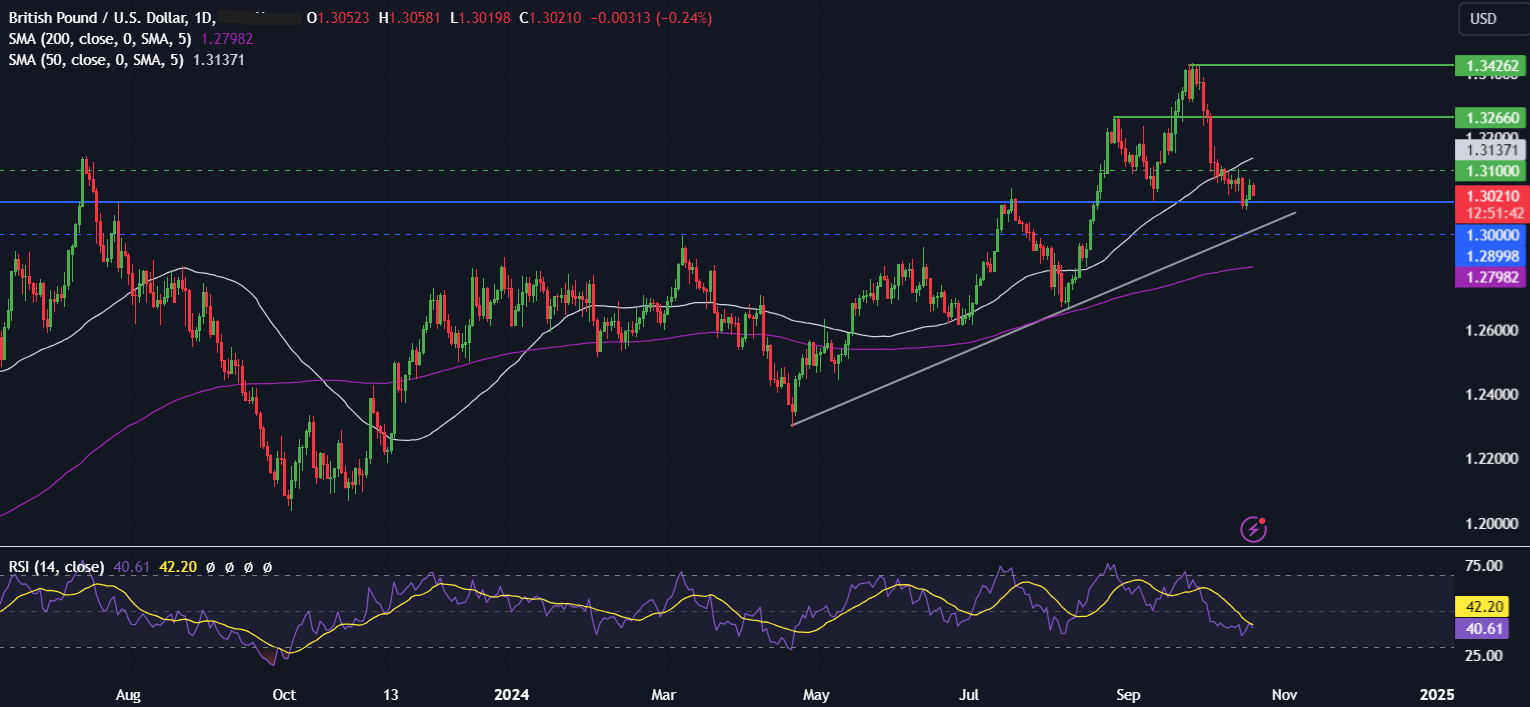
US earnings season (all week)
This week, Tesla will be the first of the magnificent seven tech companies to report (on Wednesday) as corporate earnings ramp up. It will also be one of the first US big tech companies to report. In what is expected to be a paced week for earnings, results from chip stocks will also be under the spotlight after ASML Europe’s biggest tech firm sparked volatility last week.
Both the S&P 500 and the Dow Jones trade around record highs, boosted by strong start-earnings season and solid U.S. data pointing to a soft landing for the US economy.
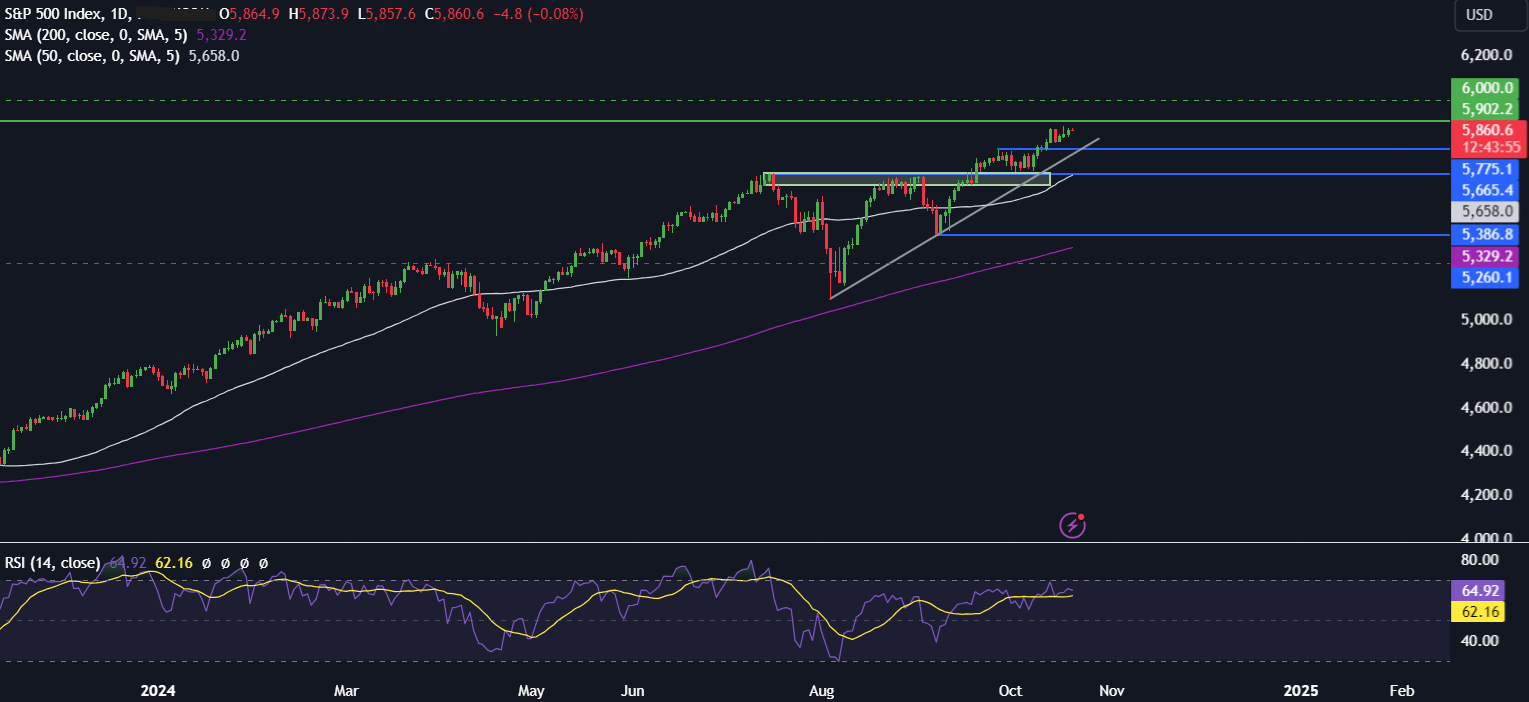
US data, Fed speakers & election risk
This week is set to be a relatively quiet week on the US economic calendar, but investors will still be watching a few reports, including numbers on the housing sector with existing and new home sales, durable goods orders, and initial jobless claims. Market participants will also get to hear from several Federal Reserve officials across the week, including Minneapolis Fed President Neel Kashkari, San Francisco Fed President Mary Daly, and Richmond Fed President Thomas Barkin, among others.
With just a few weeks to go to the US election, the market is starting to position for the outcome of the November 5th vote. Polls and the odds market point to a shift towards an increased chance of Trump winning the presidency, which has resulted in a stronger U.S. dollar given that his inflationary policies on tax and tariffs could mean the Fed cut rates at a slower pace.
The USD is expected to benefit from the Trump trade against its major peers.
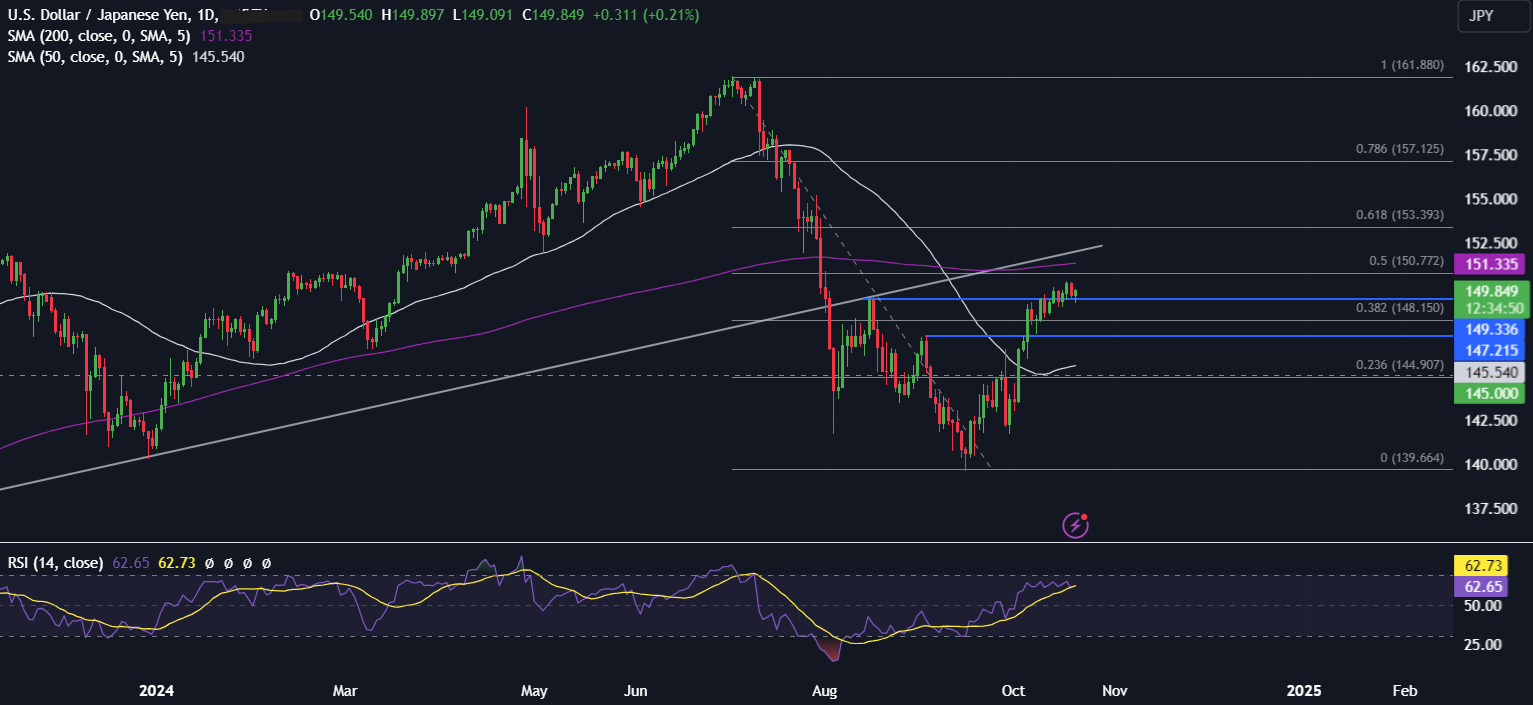
The content provided here is for informational purposes only. It is not intended as personal investment advice and does not constitute a solicitation or invitation to engage in any financial transactions, investments, or related activities. Past performance is not a reliable indicator of future results.
The financial products offered by the Company are complex and come with a high risk of losing money rapidly due to leverage. These products may not be suitable for all investors. Before engaging, you should consider whether you understand how these leveraged products work and whether you can afford the high risk of losing your money.
The Company does not accept clients from the Restricted Jurisdictions as indicated in our website/ T&C. Some services or products may not be available in your jurisdiction.
The applicable legal entity and its respective products and services depend on the client’s country of residence and the entity with which the client has established a contractual relationship during registration.




